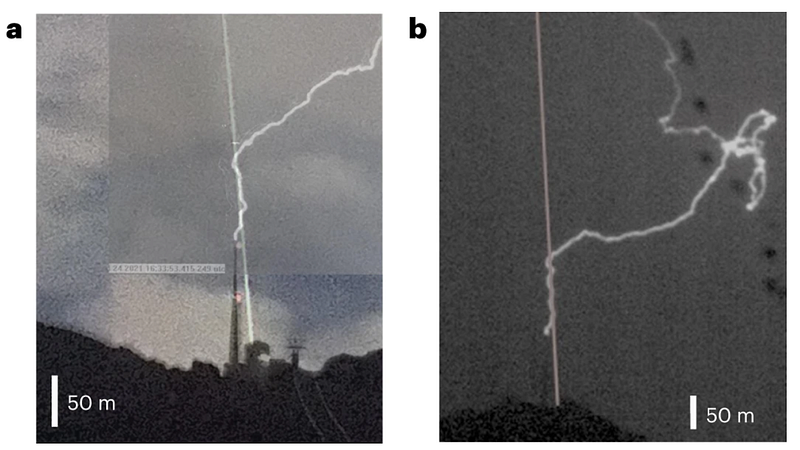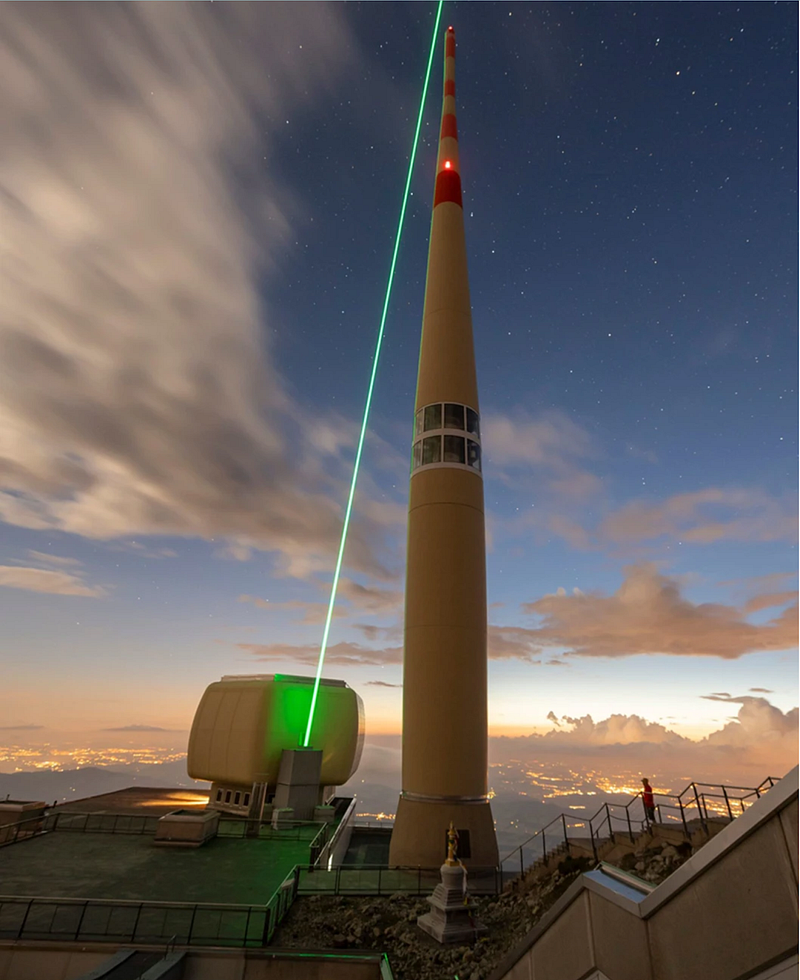Innovative Laser Technology Aims to Control Lightning Strikes
Written on
Chapter 1: The Breakthrough in Lightning Management
Imagine a future where lightning poses no danger to homes or individuals.

Image by muratart on Adobe Stock
A team of researchers from France has achieved a groundbreaking development that could transform our perception of lightning strikes. By utilizing laser beams, they have found a method to steer lightning away from both private properties and individuals, significantly lowering the risk associated with these natural occurrences.
The research was conducted on Säntis mountain, which stands at an impressive altitude of 2,502 meters in Switzerland. Here, the scientists employed a robust laser to generate filaments in the atmosphere, which acted as channels for redirecting lightning strikes over a span of 50 meters. This process resembles a laser-guided missile; however, instead of causing destruction, it safely navigates lightning away from vulnerable areas.
Although the study of lightning management has been ongoing for over two decades, this marks the first successful instance of redirecting lightning using lasers, paving the way for innovative strategies to shield people and structures from lightning's devastating power.
This research signifies a major advancement in lightning protection and physics and opens up new avenues for applying ultrashort lasers in atmospheric contexts. The potential applications include laser-based lightning protection systems for airports, launch sites, and large buildings.
Let’s delve deeper into the methodology behind this groundbreaking work.

Snapshots captured by two high-speed cameras during the lightning redirection tests in Switzerland. Image Credit: Houard, A., Walch, P., Produit, T. et al, Creative Commons Attribution 4.0
Section 1.1: Understanding the Mechanism
For centuries, humanity has sought to control or redirect lightning strikes, with lightning rods being the most prevalent solution to date. However, their protective capacity is limited.
Employing lasers to direct lightning could establish larger protective areas, offering a more effective alternative. The research team utilized a powerful, high-repetition-rate terawatt laser capable of delivering laser pulses at 1,030 nm and 720 mJ of energy per pulse.
The laser emitted concentrated pulses of light that ionized the air, forming a plasma filament for the lightning to follow. The team observed numerous lightning strikes that traced the path of the laser, including four upward strokes originating from the tower tip that eventually linked to the filament and discharged into the clouds above.
According to the research, lightning strikes have been responsible for over 4,000 human fatalities throughout history and result in billions of dollars in property damage annually. Once the technology is refined, experts believe it could evolve into a lucrative business venture.

Image of the 124-meter-high telecommunication tower on Säntis (Switzerland), where the laser system was employed to redirect lightning. Image Credit: Houard, A., Walch, P., Produit, T. et al, Creative Commons Attribution 4.0
Section 1.2: Challenges Ahead
While the concept of directing lightning with lasers is thrilling, it remains in the experimental stage, and several challenges need to be resolved before it can be implemented as a standard form of lightning protection.
The research indicated that the majority of lightning strikes were not successfully redirected by the terawatt laser system during the trials, and the outcomes were inconsistent. The study's authors pointed out that the success of the Säntis experiment was largely due to the laser's repetition rate, which was “higher by two orders of magnitude compared to earlier attempts.”
The future of this promising technology remains uncertain. Nevertheless, as advancements continue, the likelihood of lightning striking the same area multiple times is decreasing rapidly.
Here is a 3D reconstruction illustrating the operation of the laser system:
If you found this article insightful, consider subscribing to Medium Premium for $5 a month. This subscription provides unlimited access to all Medium content and supports independent journalism.